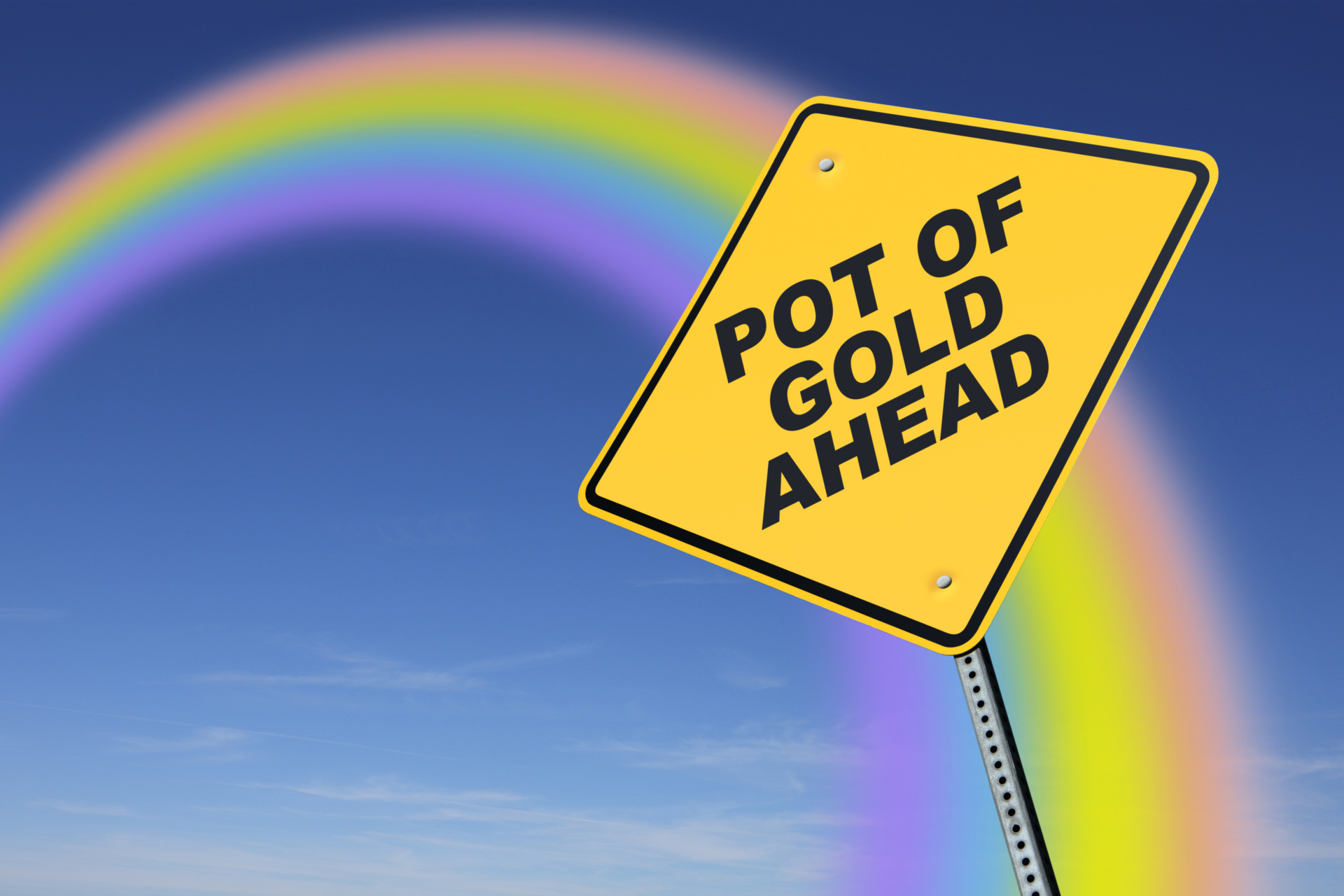Breitbart Business Digest: The Most Underpriced Risk in the Market Right Now
The Lovers, the Dreamers, and Rate Cuts
Long before green frogs had political significance, America’s most famous frog asked why there are so many songs about rainbows. Kermit’s inquiry may be a useful starting place for thinking about interest rate cuts.
In the gentle dance of light and mist, a rainbow paints a promise across the sky—a promise that, upon closer inspection, whispers of something more elusive, more ethereal. It is as if the very earth itself reaches up to cradle this arc of color, only for it to retreat into the arms of the horizon with each step we take toward it.

(iStock/Getty Images)
This phenomenon, a ballet of optics and yearning, serves as a poignant metaphor for the long-expected beginning of a cycle of interest rate cuts from the Federal Reserve. The closer we move to the point at which we expect to find its origin, the further out it seems.
The Retreat of the Doves
We began the year with Wall Street expecting that the Fed would cut interest rates six times this year, slashing the benchmark federal funds rate from the current range of 5.25 percent to 5.50 percent to a range of 3.75 percent to 4.0 percent. The market had raced ahead of the projections of Fed officials, which in December had shown a median forecast of just three quarter-point cuts. Just a single dot in the dot plot had rates as low as market prices implied.
To get an idea of how aggressive this view was, it helps to remember that the Federal Open Market Committee meets only eight times a year. So, the market was projecting that the Fed would not only start cutting rates early this year but also cut at almost every single meeting.
The market has retreated from this view in the face of continued resistance from the Federal Reserve. At the Fed’s March meeting, the median view was once again a prediction of three cuts—although the dot plot reveals that if one more Fed official had shifted in a hawkish direction this would have fallen to two cuts.
The start date of cuts has been steadily pushed back. At its January meeting, the Fed successfully communicated to the market that it would not cut at the March meeting. At the March meeting, the messaging was more ambiguous about when the first cut might arrive. Incoming economic data showing that the economy continues to grow above trend, however, has been moving the expected date further out in the calendar.
The implied odds of a cut in May are less than five percent. More interestingly, the implied odds of a June cut have tumbled below 60 percent. Like the end of the rainbow, the rate cuts keeps retreating into the horizon.
Powell’s Asymmetrical Patience
In his conversation with Kai Ryssdal last week, Fed Chairman Jerome Powell stuck to the message that the Fed could afford to be patient when it comes to rate cuts. The economy may not be growing at the breakneck pace seen in the second half of last year, but it is growing faster than analysts or the Fed expected. More importantly, it is growing fast enough that there’s no urgency to cut rates.
Perhaps the most important clarification from Powell’s remarks was his statement that the inflation data from January and February was not supportive of a rate cut. That should have been obvious. The personal consumption expenditure price index rose at an annualized pace of 4.2 percent in January and 4.1 percent in February. The three month average was above the six-month average, indicating that the trend was going in the wrong direction. Yet it needed to be said by Powell because many Wall Street analysts had convinced themselves that inflation was still cooling enough to allow for a rate cut.
Even still, there was a dovish asymmetry in Powell’s remarks. Further strength in the economy could push back the start of cuts, in Powell’s view, especially if inflation were to continue to come in hot. But there was no talk about the possibility of rate increases. It’s all about timing and not direction.
As a result, the potential that the Fed’s next move is up instead of down is arguably the most underpriced risk in the market. Futures prices and bond yields imply no possibility at all that the Fed hikes this year or next year. Given how significantly economic growth has surprised to the upside, that seems irrationally confident.
When we finally do find the rainbow connection, we might be surprised about what is on the other side.





Comments are closed.